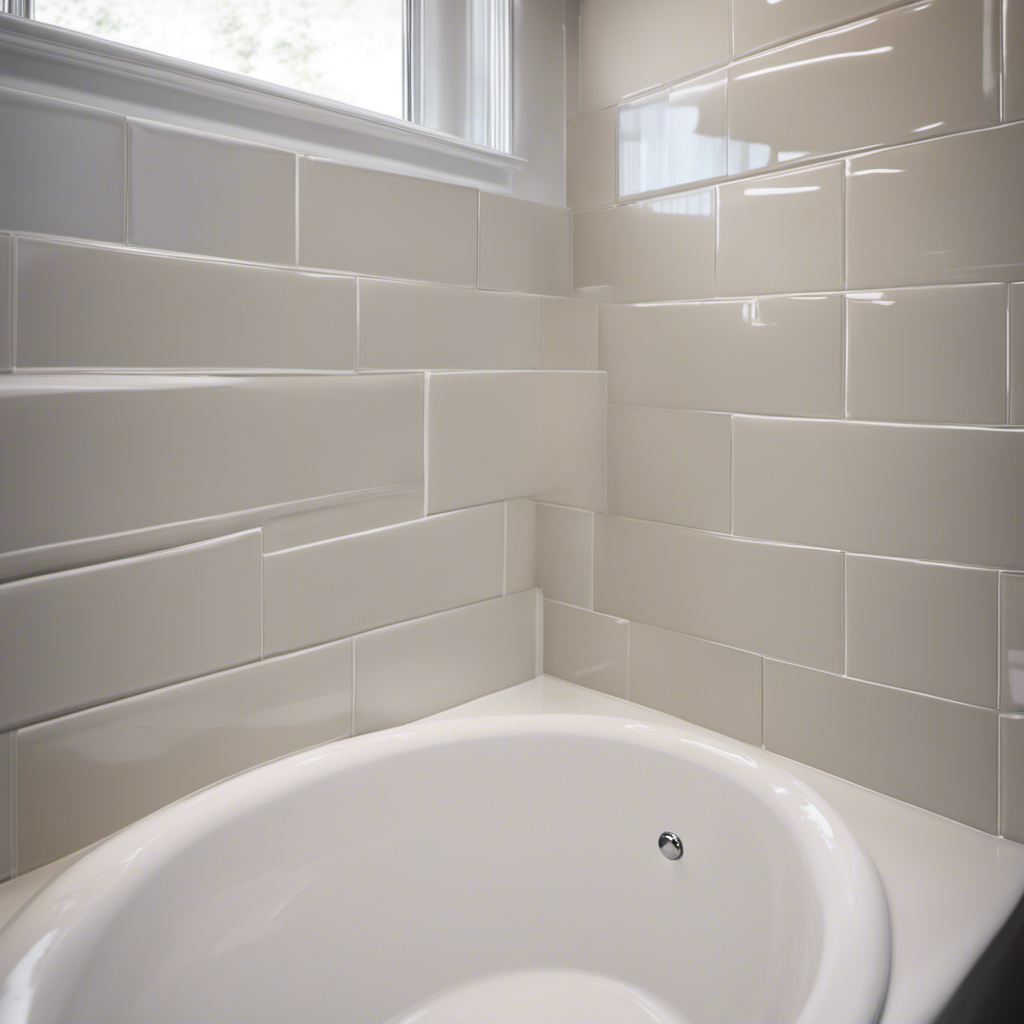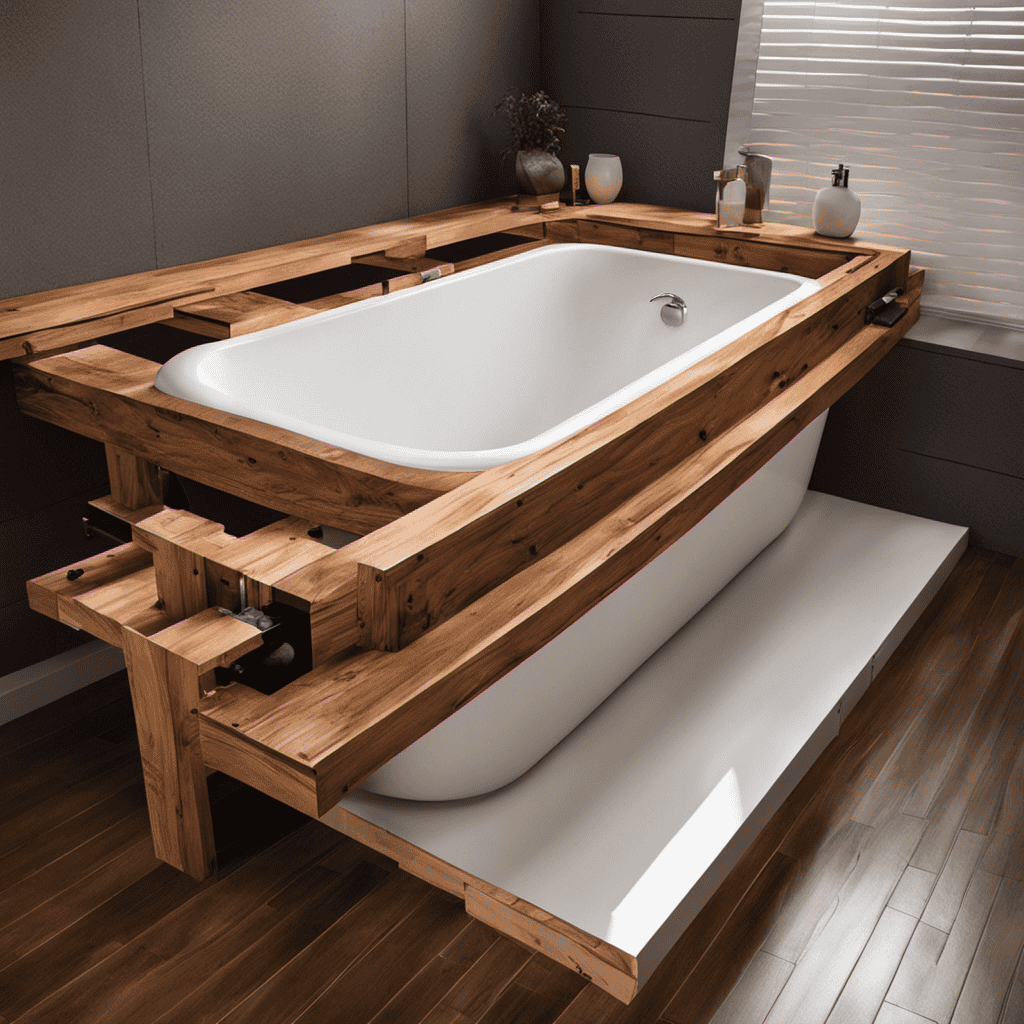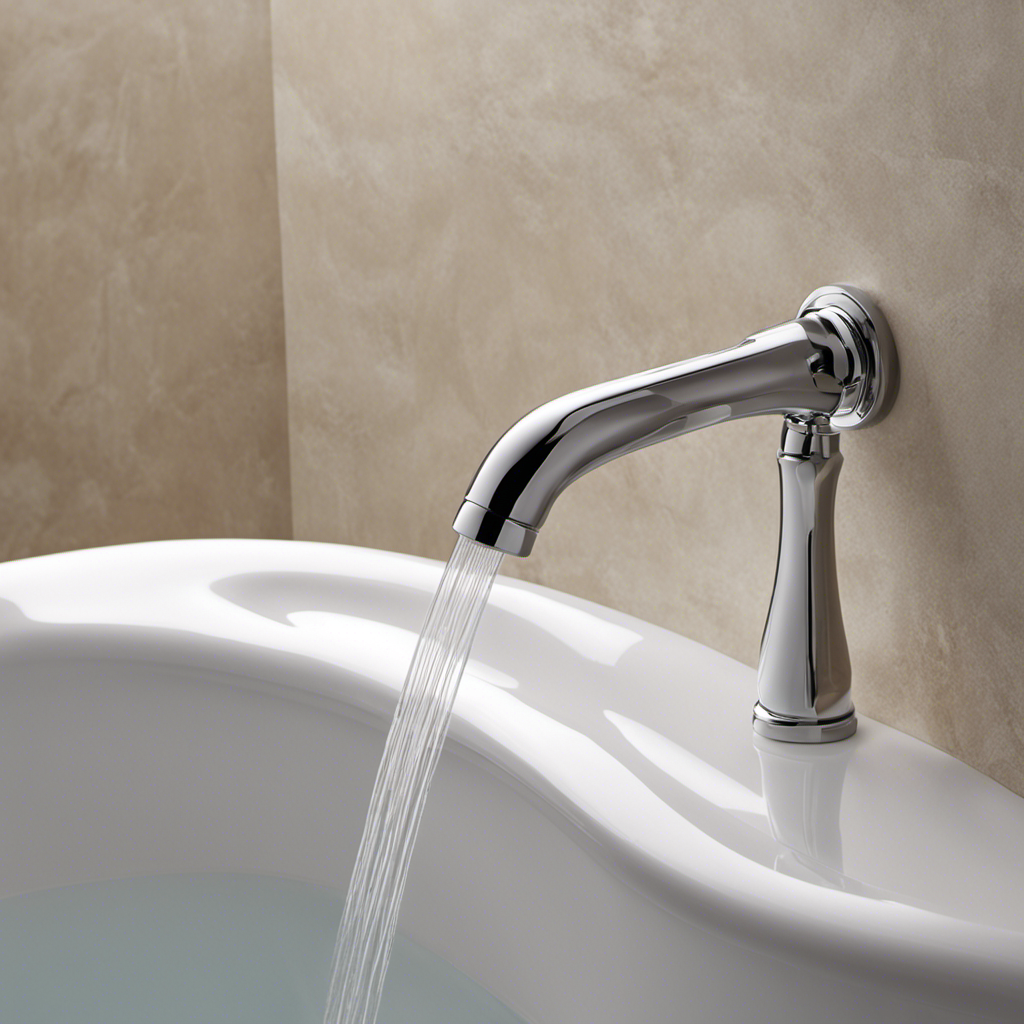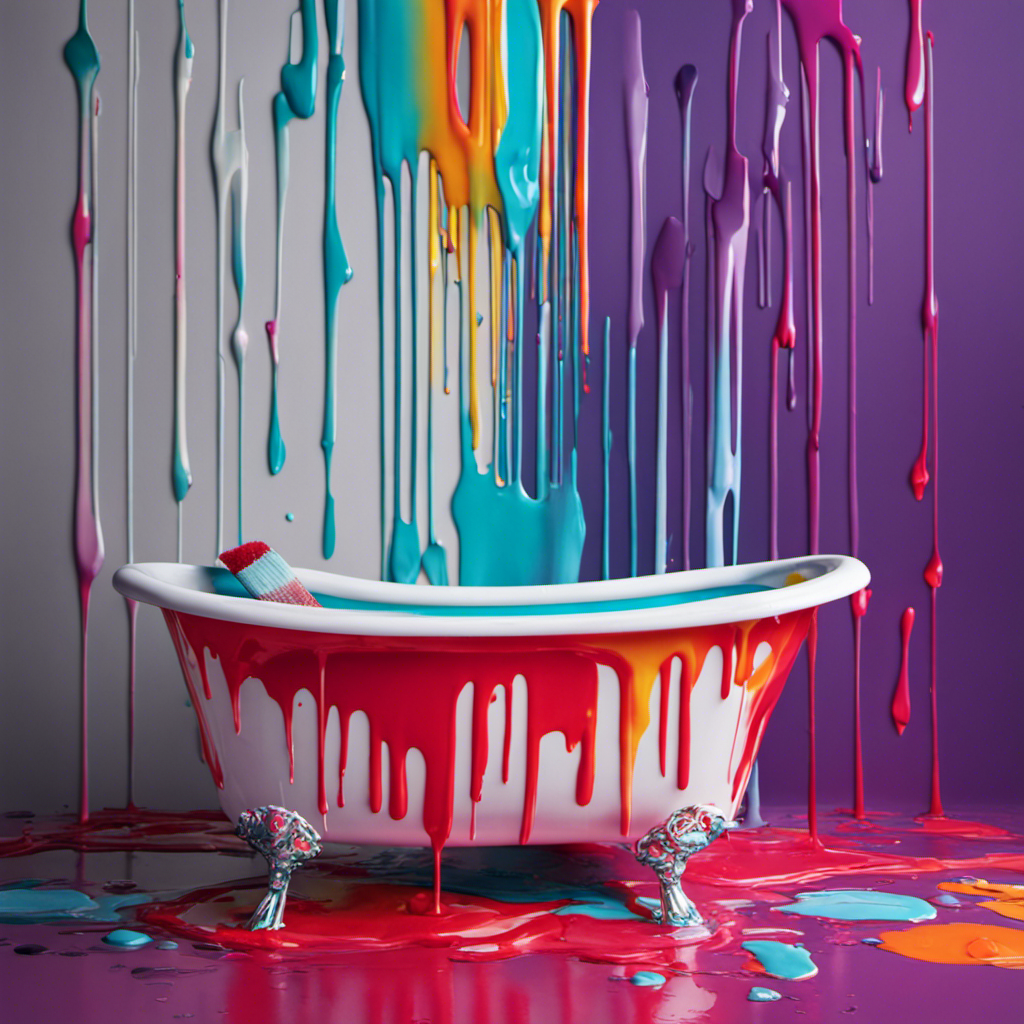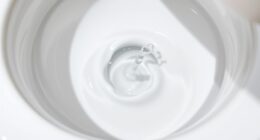As a DIY enthusiast, I’ve come to realize that finding the best caulk for a bathtub can be quite a challenge. It’s like searching for a needle in a haystack, with countless options and factors to consider.
But fear not, I’m here to guide you through this sticky situation and help you make an informed decision. In this article, we’ll explore the different types of caulk, discuss their pros and cons, and even recommend some top-notch brands.
So, let’s dive in and find the perfect caulk for your bathtub!
Key Takeaways
- Different types of caulk have different properties and uses, such as silicone, acrylic, latex, and hybrid caulk.
- Silicone caulk is recommended for material compatibility and flexibility, and it bonds well with ceramic, porcelain, fiberglass, and acrylic.
- Proper surface preparation, application techniques, and allowing the caulk to cure fully are essential for a long-lasting waterproof seal.
- When choosing between silicone and acrylic caulk, consider factors such as durability, mold resistance, ease of application and removal, and material compatibility.
Types of Caulk for Bathtubs
When choosing caulk for your bathtub, there are several different types available to consider. One important factor to consider is the caulk color options. You want to choose a color that matches or complements your bathtub and tiles. Popular color options include white, clear, and almond.
Another important consideration is the caulk drying time. Some caulk types dry faster than others, which is crucial if you need to use your bathtub soon after applying the caulk. Silicone caulk, for example, typically takes 24 to 48 hours to dry completely, while acrylic caulk can dry within a few hours. It’s important to read the label or product instructions to determine the drying time for the specific caulk you choose.
Factors to Consider When Choosing Bathtub Caulk
When choosing caulk for your bathtub, it’s important to consider factors such as material compatibility and the ability to provide a long-lasting waterproof seal.
Material compatibility ensures that the caulk will adhere well to the surface of your bathtub, preventing any future leaks or water damage.
Additionally, a long-lasting waterproof seal is crucial in maintaining the integrity of your bathtub and preventing any water seepage.
Material Compatibility
To ensure proper material compatibility for your bathtub caulking, you should use a silicone-based caulk. Silicone caulk is the best option because it provides excellent adhesion and flexibility, making it perfect for sealing joints and preventing water leakage in the bathroom.
Here are two important points to consider about material compatibility when choosing bathtub caulk:
-
Bonding Process: Silicone caulk has the ability to adhere to a wide range of materials commonly found in bathrooms, such as ceramic, porcelain, fiberglass, and acrylic. This ensures a strong bond between the caulk and the bathtub, creating a durable seal.
-
Caulk Curing: Silicone caulk has a relatively fast curing time, usually within 24 to 48 hours. During this time, the caulk undergoes a chemical process that allows it to harden and form a watertight seal. It is important to allow the caulk to fully cure before exposing it to water or moisture for the best results.
Long-Lasting Waterproof Seal
By allowing the silicone-based caulk to fully cure, you can ensure a long-lasting waterproof seal for your bathtub. The longevity of the caulk depends on various factors, including the quality of the caulk and the proper application technique.
To maximize the lifespan of the caulk, it is important to clean and dry the surface thoroughly before applying the caulk. This ensures better adhesion and prevents moisture from seeping underneath the caulk. Additionally, using a caulk gun for precise application and creating a smooth, even bead is crucial.
After applying the caulk, it is essential to let it cure completely before exposing it to water. This typically takes around 24-48 hours, but it’s best to check the manufacturer’s instructions for specific curing times.
Following these caulking techniques will help you achieve a long-lasting waterproof seal for your bathtub.
Silicone Caulk: Pros and Cons for Bathtub Use
When it comes to choosing bathtub caulk, there are a few key points to consider.
Durability is an important factor to keep in mind. Silicone caulk is known for its durability, making it a popular choice for high-traffic areas like bathtubs.
Mold resistance is another important consideration. Silicone caulk is generally more resistant to mold and mildew compared to acrylic caulk.
Ease of application and removal is also worth considering. Silicone caulk can be a bit tricky to work with and may require a specialized tool for removal. On the other hand, acrylic caulk is easier to apply and remove.
Durable Vs. Acrylic
If you want a caulk that is long-lasting and resistant to moisture, acrylic caulk is a great choice for your bathtub. Acrylic caulk is a type of caulk that is made from a water-based formula, which makes it easier to clean up and less toxic than other types of caulk.
Here are some key differences between acrylic and latex caulk:
-
Acrylic caulk is more durable and flexible than latex caulk, making it ideal for areas that experience frequent movement, such as around a bathtub.
-
Acrylic caulk is also more resistant to mildew and mold growth, which is important in a moist environment like a bathroom.
-
When it comes to tiling, acrylic caulk is often the best choice. It adheres well to both porous and non-porous surfaces, providing a strong and long-lasting seal for your tiles.
Overall, if you’re looking for a caulk that offers durability, moisture resistance, and strong adhesion for tiling, acrylic caulk is the best option for your bathtub.
Mold Resistance: Silicone Vs. Acrylic
After comparing the durability of silicone and acrylic caulk in my previous subtopic, let’s now delve into their effectiveness in terms of mold resistance.
When it comes to this aspect, silicone caulk takes the lead. Due to its inherent water resistance and flexibility, silicone caulk is highly effective in preventing mold growth. It forms a tight seal that prevents moisture from seeping in, reducing the chances of mold and mildew formation.
On the other hand, acrylic caulk is not as effective in resisting mold. While it can still provide some level of protection, it is more prone to cracking and allowing moisture to penetrate.
In terms of health and safety considerations, both silicone and acrylic caulk are generally safe to use. However, it is important to note that some acrylic caulks may contain volatile organic compounds (VOCs) which can emit harmful fumes during application and curing.
On the other hand, silicone caulk is typically low in VOCs, making it a safer option for indoor use. It is always advisable to check the product label for any specific health and safety precautions before choosing a caulk for your bathtub.
Application and Removal
To apply and remove silicone or acrylic caulk effectively, you should use a caulk gun and a caulk scraper, respectively. When it comes to removing old caulk, it’s important to start by softening it with a caulk remover or a heat gun. Once the old caulk is softened, you can use a caulk scraper to gently lift and remove it from the surface.
Here are some tips for achieving a smooth application of caulk:
- Make sure the surface is clean and dry before applying caulk.
- Cut the caulk tube nozzle at a 45-degree angle for better control.
- Apply a thin, even bead of caulk, using steady pressure on the caulk gun.
- Smooth the caulk with a wet finger or a caulk smoother tool.
- Remove any excess caulk with a damp cloth.
Acrylic Caulk: Benefits and Drawbacks for Bathtub Applications
Acrylic caulk is a popular choice for bathtub applications due to its durability and flexibility. When it comes to comparing acrylic to silicone caulk, there are a few key differences to consider.
Acrylic caulk is water-based, making it easy to clean up with just soap and water. It also has excellent adhesion properties, ensuring that it bonds well to a variety of surfaces including ceramic, porcelain, and fiberglass. Additionally, acrylic caulk is resistant to cracking and shrinking, which is crucial in a high-moisture environment like a bathtub. Its flexibility allows for some movement without compromising the seal.
However, one drawback of acrylic caulk is its limited mold resistance compared to silicone caulk.
In the next section, we will explore whether latex caulk is suitable for bathtub caulking.
Latex Caulk: Is It Suitable for Bathtub Caulking
Latex caulk, on the other hand, offers a different set of benefits and considerations for bathtub caulking.
While epoxy caulk is commonly used for bathtub projects, latex caulk is a suitable alternative for those looking for a more flexible and easy-to-use option.
Here are some key points to consider:
-
Easy application: Latex caulk is easier to work with due to its smooth texture and ability to be applied with a standard caulk gun.
-
Flexibility: Unlike epoxy caulk, latex caulk has more flexibility, allowing it to expand and contract with the natural movement of the bathtub.
-
Water resistance: Latex caulk is water-resistant and can withstand the moisture and humidity in a bathroom environment.
In conclusion, while epoxy caulk is often recommended for bathtub caulking, latex caulk offers its own set of benefits such as ease of application, flexibility, and water resistance.
Now let’s explore the best caulk brands for bathtub projects.
Best Caulk Brands for Bathtub Projects
When selecting caulk for your bathtub project, it’s important to consider the top brands available on the market. The right caulk can make a significant difference in the durability and appearance of your bathtub. Here are some of the best caulk brands that are highly recommended for bathtub projects:
| Brand | Features |
|---|---|
| 1. DAP | – Wide range of colors for best caulk color options – Excellent adhesion and flexibility – Waterproof and mold resistant |
| 2. GE Silicone II | – High-quality silicone caulk – Available in various colors – Easy to apply with caulk application tools |
| 3. Loctite Polyseamseal | – Paintable caulk for custom color options – Strong adhesion and flexibility – Resistant to water and mildew |
These brands offer a wide range of color options to match your bathtub and bathroom decor. Additionally, using the right caulk application tools can ensure a smooth and professional-looking finish. Now that we have explored the best caulk brands, let’s move on to the step-by-step guide to applying caulk on a bathtub.
Step-by-Step Guide to Applying Caulk on a Bathtub
To achieve a professional-looking finish on your bathtub, start by thoroughly cleaning the surface and removing any old caulk residue. This will ensure that the new caulk adheres properly and lasts longer. Once the surface is clean, you can proceed with applying the caulk.
Here is a step-by-step guide to help you:
-
Choose the right caulk color for your bathtub. There are a variety of colors available, so pick one that matches your bathroom decor.
-
Before applying the caulk, make sure to read the manufacturer’s instructions regarding drying time. Different caulks have different drying times, so it’s important to follow these guidelines to ensure a proper cure.
Conclusion
In conclusion, choosing the right caulk for your bathtub is crucial in ensuring a long-lasting and watertight seal. Silicone caulk is known for its durability and flexibility, making it a popular choice. Acrylic caulk, on the other hand, offers a more affordable option with easy application. However, latex caulk may not be the best choice due to its limited durability.
When it comes to brands, it is important to look for reputable ones like GE, DAP, or OSI for reliable results. These brands have a proven track record of producing high-quality caulk that can effectively seal your bathtub.
So, why settle for a leaking bathtub when you can easily seal it with the right caulk? Don’t let water damage and potential mold growth become a problem. Take the time to choose the right caulk and ensure a watertight seal that will keep your bathtub in good condition for years to come.
